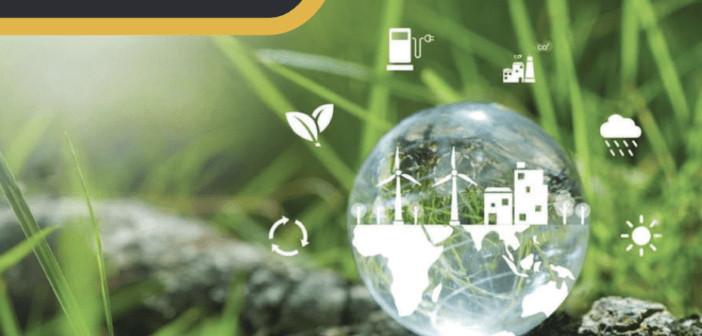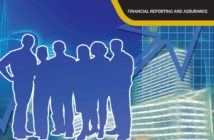By Jim McFie, a Fellow of ICPAK
The CDSB Site and Its Resources Remain Relevant for Preparers of Sustainability Reports
On 18 March 2024, a conference on the International Sustainability Board’s (ISSB’s) IFRS S1 General Requirements for Disclosure of Sustainability-related Financial Information and IFRS S2 Climate Related Disclosures was hosted in Nairobi by the Institute of Certified Public Accountants of Kenya (ICPAK), the Capital Markets Authority (CMA) and the ISSB. Emmanuel Faber, the chair of the ISSB, and Dr Ndidi Nnoli-Edozien, an ISSB board member, CPA Philip Kakai, the Chair of ICPAK and Wycliffe Shamiah and a number of other persons spoke at the meeting. Kenya is one of the countries in Africa leading the charge on Sustainability Reporting.
The Nairobi Securities Exchange (NSE) Environmental Social and Governance (ESG) Disclosures Guidance Manual was published in November 2021. It requires NSE listed companies to report publicly on their ESG performance at least annually. The “ESG Disclosures Guidance Manual” guides this reporting. The manual is also available as a public good for other organisations that would be interested in ESG reporting. Listed companies were given a grace period of one year from the issuance of the guidelines to interact and familiarize themselves with the ESG reporting steps. From November 2022, listed companies are expected to include a sustainability/ESG report in their “annual integrated reports”containing – at a minimum – the mandatory ESG disclosures discussed in the manual. Issuers can also choose to publish a separate ESG/sustainability report. The phrase used in the compliance section of the manual is problematic. What does the phrase “annual integrated reports” mean? Is the NSE mandating “integrated reporting” for companies listed on the exchange? The “Integrated Report” of several listed companies are not “Integrated Reports”even though they are called “Integrated Reports”.
The International Integrated Reporting <IR> Framework was published by the International Integrated Reporting Council in December 2013. The International Integrated Reporting Council (IIRC) and the Sustainability Accounting Standards Board (SASB) officially announced their merger to form the Value Reporting Foundation on 9 June 2021. Professor Judge Mervyn E. King, Chair Emeritus of the Value Reporting Foundation said at the launch: “We are virtually at the door of having a globally accepted comprehensive corporate reporting system. I am excited and confident that the endeavours of the Value Reporting Foundation will take us closer to the opening of that door to what I call the end game.” On 1 August 2022, the International Financial Reporting Standards (IFRS) Foundation announced the completion of the consolidation of the Value Reporting Foundation (VRF) into the IFRS Foundation. It followed the commitment made at the Conference of the Parties (COP)26 in Glasgow, Scotland, to consolidate staff and resources of leading global sustainability disclosure initiatives to support the IFRS Foundation’s new International Sustainability Standards Board’s (ISSB) work to develop a comprehensive global baseline of sustainability disclosures for the capital markets. In January 2022 the Climate Disclosure Standards Board (CDSB) published its “CDSB Framework for reporting environmental & social information: Advancing and aligning disclosure of environmental and social information in mainstream reports”. But on 31 January 2022, the CDSB was consolidated into the IFRS Foundation to support the work of the newly established ISSB. The CDSB site and its resources remain relevant for preparers of sustainability reports, looking to improve sustainability disclosure until the ISSB has issued its IFRS Sustainability Disclosure Standards on such topics. The CDSB announced that no further work or guidance would be produced or published by CDSB: however, one can sign up for the CDSB newsletter and stay updated with its work on the Task Force on Climate-related Financial Disclosures: how long this will continue to be the case is uncertain.
But let us go back to “Integrated Reporting”. The definition of an “Integrated Report” is included in the International <IR> Framework, published in January 2021: “An integrated report is a concise communication about how an organization’s strategy, governance, performance and prospects, in the context of its external environment, lead to the creation, preservation or erosion of value over the short, medium and long term”. In my opinion, this is an extremely poor definition of an integrated report. But the application of the <IR> Framework remedies some of the deficiencies of the definition: “Any communication claiming to be an integrated report and referencing the Framework should apply all the requirements”. Paragraph 2.10 states: “All organizations depend on various forms of capital for their success. In the Framework, the capitals comprise financial, manufactured, intellectual, human, social and relationship, and natural”. Paragraph 2.15 states: For the purpose of the Framework, the capitals are categorized and described as follows:
(1) Financial capital: The pool of funds that is: (a) Available to an organization for use in the production of goods or the provision of services; (b) Obtained through financing, such as debt, equity or grants, or generated through operations or investments. (2) Manufactured capital: Manufactured physical objects (as distinct from natural physical objects) that are available to an organization for use in the production of goods or the provision of services, including: (a) Buildings, Equipment, Infrastructure (such as roads, ports, bridges, and waste and water treatment plants). Manufactured capital is often created by other organizations, but includes assets manufactured by the reporting organization for sale or when they are retained for its own use. (3) Intellectual capital: Organizational, knowledge-based intangibles, including: (a) Intellectual property, such as patents, copyrights, software, rights and licences; (b) “Organizational capital” such as tacit knowledge, systems, procedures and protocols. (4) Human capital: People’s competencies, capabilities and experience, and their motivations to innovate, including their: (a) Alignment with and support for an organization’s governance framework, risk management approach, and ethical values; (b) Ability to understand, develop and implement an organization’s strategy; (c) Loyalties and motivations for improving processes, goods and services, including their ability to lead, manage and collaborate. (5) Social and relationship capital: The institutions and the relationships within and between communities, groups of stakeholders and other networks, and the ability to share information to enhance individual and collective well-being. Social and relationship capital includes: (a) Shared norms, and common values and behaviours; (b) Key stakeholder relationships, and the trust and willingness to engage that an organization has developed and strives to build and protect with external stakeholders; (c) Intangibles associated with the brand and reputation that an organization has developed; (d) An organization’s social licence to operate. (6) Natural capital: All renewable and non-renewable environmental resources and processes that provide goods or services that support the past, current or future prosperity of an organization. It includes: (a) Air, water, land, minerals and forests; (b) Biodiversity and eco-system health.
The last part of paragraph 2.10 hints at the possibility of not reporting on these capitals: it says: “although as discussed in paragraphs 2.17–2.19, organizations preparing an integrated report are not required to adopt this categorization”. But paragraph 2.19 states: “Regardless of how an organization categorizes the capitals for its own purposes, the categories identified in paragraph 2.15 are to be used as a guideline to ensure the organization does not overlook a capital that it uses or affects”.
There are many other matters of importance in the Framework but in the interest of not making this article excessively time consuming for you to read, let me return to the vague directive contained in the NSE ESG Disclosures Guidance Manual. As I mention above, the sentence “listed companies are expected to include a sustainability/ESG report in their ‘annual integrated reports’ could be understood to mandate that all annual reports are henceforth required to be “integrated reports”. However, “listed companies are expected to include a sustainability/ESG report in their ‘annual integrated reports’” could mean that, rather than the company following the alternative route: “Issuers can also choose to publish a separate ESG/sustainability report”, what they can do is to integrate the ESG report in the “Annual Report and Financial Statements: that is what a number of NSE listed companies do currently.
The International Sustainability Standards Board (ISSB)’s inaugural standards, IFRS S1 and IFRS S2, mark the beginning of a new era of sustainability-related disclosures in capital markets worldwide. The ISSB Standards will help to improve trust and confidence in company disclosures about sustainability to inform investment decisions. And for the first time, these Standards, issued on 26 June 2023, create a common language for disclosing sustainability-related risks and opportunities on a company’s prospects. The ISSB Chair, Emmanuel Faber (who as stated above was recently in Nairobi at the invitation of ICPAK and spoke at an event organized by ICPAK) launched the Standards at an IFRS Foundation Conference in London. Faber explained how the concepts of the Integrated Reporting Framework have been embedded in the heart of IFRS S1. He encouraged the continued use of the Integrated Reporting Framework. He pointed out that the Integrated Reporting Framework, when used together with ISSB Standards, can support a holistic view of the value creation process through governance and business model disclosure to drive connections between financial statements and sustainabilityrelated financial disclosures. By referring to this articulation of the value creation process, a company will be better placed to explain how it is working within its business model and value chain to manage the sustainability-related risks and opportunities that can affect its performance and ability to deliver financial value for investors over the short, medium and long term.
Accountants are charting new territory when they venture into sustainability reporting. But let us become more expert that the sustainability experts so that we remain relevant for the future.




